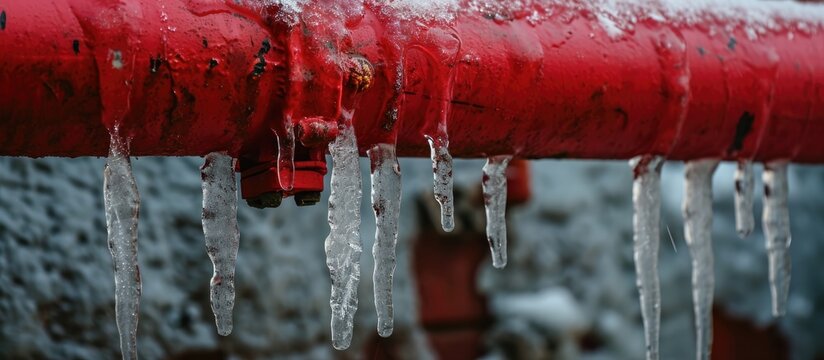Protect Against Frozen Plumbing in Cold Weather: Professional Advice
Protect Against Frozen Plumbing in Cold Weather: Professional Advice
Blog Article
Every person has got their own assumption about How to prepare your home plumbing for winter weather.

Winter can damage your pipes, especially by freezing pipelines. Right here's just how to stop it from happening and what to do if it does.
Introduction
As temperatures decrease, the threat of frozen pipes increases, possibly leading to expensive repairs and water damage. Recognizing how to prevent icy pipelines is essential for homeowners in cool environments.
Avoidance Tips
Protecting prone pipelines
Cover pipes in insulation sleeves or utilize warmth tape to protect them from freezing temperatures. Focus on pipelines in unheated or outside locations of the home.
Home heating techniques
Maintain interior rooms sufficiently warmed, particularly areas with pipes. Open closet doors to allow warm air to flow around pipes under sinks.
Exactly how to determine icy pipelines
Search for reduced water flow from taps, uncommon smells or sounds from pipelines, and visible frost on subjected pipelines.
Long-Term Solutions
Structural adjustments
Think about rerouting pipelines away from exterior walls or unheated areas. Include added insulation to attic rooms, cellars, and crawl spaces.
Upgrading insulation
Purchase high-grade insulation for pipelines, attics, and wall surfaces. Proper insulation assists keep constant temperature levels and minimizes the risk of icy pipelines.
Safeguarding Outdoor Plumbing
Garden hose pipes and exterior taps
Detach and drain garden tubes before winter months. Set up frost-proof spigots or cover outdoor taps with insulated caps.
Understanding Frozen Pipelines
What causes pipelines to freeze?
Pipelines ice up when revealed to temperature levels listed below 32 ° F (0 ° C) for prolonged periods. As water inside the pipes ices up, it increases, putting pressure on the pipeline wall surfaces and possibly causing them to break.
Risks and problems
Frozen pipes can lead to water supply interruptions, building damage, and costly fixings. Ruptured pipelines can flood homes and cause extensive architectural damage.
Signs of Frozen Pipeline
Determining icy pipelines early can avoid them from breaking.
What to Do If Your Pipes Freeze
Immediate activities to take
If you believe icy pipes, maintain faucets available to eliminate pressure as the ice melts. Use a hairdryer or towels taken in warm water to thaw pipes gradually.
Conclusion
Preventing icy pipelines requires aggressive procedures and fast actions. By understanding the reasons, indications, and preventive measures, house owners can safeguard their pipes during cold weather.
6 Proven Ways to Prevent Frozen Pipes and Protect Your Home
Disconnect and Drain Garden Hoses
Before winter arrives, start by disconnecting your garden hoses and draining any remaining water. Close the shut-off valves that supply outdoor hose bibs and leave the outdoor faucet open to allow any residual water to drain. For extra protection, consider using faucet covers throughout the colder months. It’s also important to drain water from any sprinkler supply lines following the manufacturer’s directions.
Insulate Exposed Pipes
Insulating your pipes is an effective way to prevent freezing. Pipe insulation is readily available at home improvement stores and is relatively inexpensive. Pay close attention to pipes in unheated areas such as the attic, basement, crawl spaces, or garage. Apply foam insulation generously to create a buffer against the cold. You can also wrap your pipes in heat tape or thermostat-controlled heat cables for added warmth.
Seal Air Leaks
Inspect your home for any cracks or openings that could let in cold air. Seal any holes around the piping in interior or exterior walls, as well as the sill plates where your home rests on its foundation. Additionally, make sure to keep your garage door closed unless you’re entering or exiting. Leaving it open creates a significant air leak that can lead to frozen pipes.
Allow Warm Air Circulation
During cold snaps, it’s essential to allow warm air to circulate evenly throughout your home. Leave interior doors ajar to promote better airflow. Open kitchen and bathroom cabinets to help distribute heat consistently around the rooms. If you have small children or pets, be sure to remove any household chemicals or potentially harmful cleaners from open cabinets for safety.
Let Faucets Drip
A small trickle of water can make a big difference in preventing ice formation inside your pipes. When temperatures drop significantly, start a drip of water from all faucets served by exposed pipes. This continuous flow helps prevent the water from freezing. Additionally, running a few faucets slightly can relieve pressure inside the pipes, reducing the chances of a rupture if the water inside does freeze.
https://choateshvac.com/6-proven-ways-to-prevent-frozen-pipes-and-protect-your-home/

Do you really like reading up on Winter Plumbing Precautions: Preventing Frozen Pipes? Write a comment below. We will be pleased to hear your suggestions about this blog post. In hopes that you come back again in the future. Those who enjoyed reading our page if you please remember to share it. Thank-you for going through it.
Explore Now Report this page